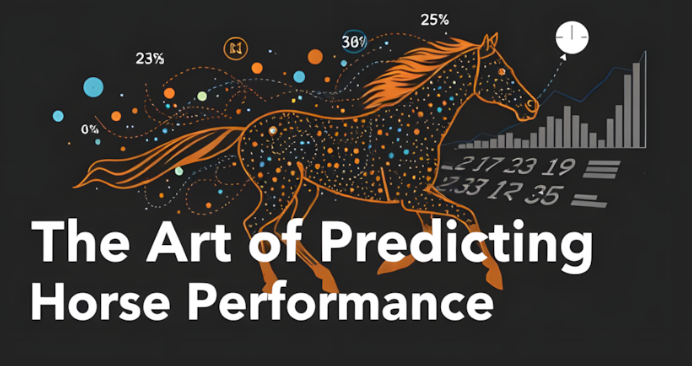
The strategic maneuvers in horse racing bring out the anticipation as much as the horses’ velocities because pace selection and running patterns act as crucial determinants of race outcomes. The elements casual observers tend to disregard provide vital information about how horses compete throughout races and their strategies. The race speed is controlled by pace, and the run style showcases which race position and strategy a horse prefers as it runs either upfront or waits to gain momentum later. Bettors and racing fans who understand these dynamics employ them to extract hidden patterns that determine winners from the rest of the field. Pace analysis brings order to the noisy horse races so bettors can establish a science-backed approach to finding winning strategies. This research examines multiple techniques that establish order in horse racing unpredictability and shows why the pace determines race outcomes.
Table of Contents
What do Pace and Run Style Mean?
Racing outcomes heavily depend on two defining factors known as pace and run style when it comes to horse competition. A horse’s speed selection determines the pace, and its competitive approach creates its run style. Horses who prefer running in front positions qualify as speed horses because they establish the pace in races and try to hold their lead until the final stretch. The closing style consists of runners who prefer starting at the back before making their final push at the end of the race. Flowing between the leading pack and middle pack, a category of pressers can maintain proximity to leaders and midfielders who wait their turn before expanding their positions. A horse’s ability to preserve its running style depends significantly on three main elements: the track distance, the surface material between turf and all-weather, and various environmental circumstances, notably traffic problems and race tempo. The assessment of race dynamics proves critical for bettors since it helps them predict future race developments while evaluating the probable finishing positions of contesting horses.
How Do Pace and Run Style Influence Race Outcomes?
Analysis of race outcomes depends heavily on pace and run style factors for those who bet on horse racing. The speed at which races unfold determines how quickly all contests advance and directly impacts how horses perform during races. Front-runners possess an advantage in slow-paced races. They use their energetic reserve to stay in front until late, while closures obtain advantages in fast-paced races because they exploit the exhaustion of front-runners with their final race surge. The success of horses in racing depends significantly on their preferred running style because front runners succeed best when uncontested and may fail when multiple horses challenge the leadership early since they continue too long before the start. Runners whose strategy is to conserve energy and come from behind need a solid, fast tempo to implement their late-stage attack. Understanding race potential requires examining historical data from sectional times, previous finishing results, in-running observations, and essential race conditions consisting of surface type, distance, draw position, and field capacity. Betters who want to improve their horse racing betting strategy must examine how running pace affects racing style. This knowledge helps them predict final results and discover favorable racing opportunities.
What Defines a Race Shape?
Race shape in horse racing represents the complete evolution of horseracing visibility that results from horse starting positions and movement across the entire course. The main elements affecting race shape consist of the race distance, its type, and the preferred methods that horses select for competition. Sprint races with limited participating horses typically follow a basic pattern where speed specialists lead from the beginning and maintain their positions until the last leg. The competitive interactions in longer-distance events tend to become complex due to considerations of field size. The competition typically develops with leaders pushing the pace from the front. At the same time, midfield rivals stay reserved for tactical placement, and runner-up animals improve their positions during the later stages when the leaders start wearing out. As the different stages of the race unfold, their form changes significantly, thus creating additional difficulty for spectators and bettors to anticipate outcomes. Betters gain essential predictive capabilities in horse racing by knowing how the pack formation develops because this data reveals performance prospects for different participants.
What Are the Various Types of Race Shapes?
Horse racing race shapes primarily depend upon different running types, including front-runners, stalkers, midfield runners, and closers. Racers who become front-runners succeed in establishing an initial lead pace because this method helps them maintain their competitive position until the finish. The position of stalkers lies immediately behind leaders as they maintain continuous observation for any weakening performance from leaders that could create an attack opportunity. The running style of midfielders depends on their pack position since they keep a steady pace through the race duration until they find appropriate movement forward. In racing scenarios, Losers use their quickness to achieve the best results. The early races of these horses show a reserved pace, but they’re capable of outpacing weakened competitors at the end stretch thanks to their stamina and quick acceleration. The combination of distinct race styles produces the fundamental race structure. When multiple horses take the lead at the beginning of a race, the early pace becomes intense, thus benefiting closers. However, when no front-runners appear, only one competitor becomes dominant. Understanding which horses dominate a race depends on studying historical races, subtle time segments, and updated comments provided by professionals. People who understand race shapes can better predict future outcomes, leading to elevated betting accuracy.

